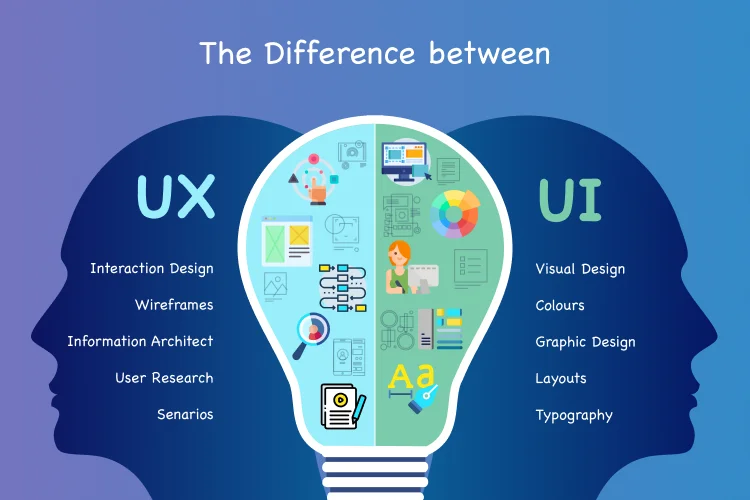In the dynamic realm of video games, game UX design, or user experience (UX) design emerges as a pivotal force shaping player interactions and overall enjoyment. In this article, we delve into the intricacies of this critical aspect, exploring the fundamentals, principles, and the symbiotic relationship between UX and user interface (UI). From deciphering the importance of UX in video games to creating immersive gameplay through thoughtful design and addressing common UX issues, this exploration from Polydin Game art outsourcing promises to unravel the key elements that contribute to an engaging gaming experience.
What is Game UX?
Game UX, or Game User Experience, is the holistic approach to designing the interaction between players and the game itself. It goes beyond graphics and gameplay mechanics, encompassing the entire user journey, from the moment a player launches the game to the overall experience during play. In essence, Game UX strives to create a seamless, enjoyable, and immersive encounter for players, considering factors like navigation, responsiveness, feedback mechanisms, and overall satisfaction.
Game UX aims to understand how players engage with a game on an emotional and cognitive level. This involves analyzing user behaviors, preferences, and challenges to enhance the overall gaming experience. Effective Game UX design considers elements such as intuitive controls, clear feedback systems, and a visually pleasing interface to create a cohesive and engaging environment. Ultimately, Game UX is about crafting an experience that not only captivates players but also ensures they navigate, interact, and enjoy the game with ease and satisfaction.
Read Also: What is UI in Games? | All about User Interface
Principles of Effective Game UX Design
Effective Game UX design is anchored in principles that transcend mere functionality, aiming to create an immersive and enjoyable journey for players. Here are key principles that guide the craft:
- User-Centric Approach: Place the player at the center of design decisions. Understand their expectations, preferences, and behaviors to tailor the gaming experience accordingly.
- Intuitive Navigation: Design a user interface that allows players to navigate effortlessly. Intuition should guide actions, minimizing the need for complex instructions or tutorials.
- Consistent Feedback: Provide clear and consistent feedback for player actions. Visual, auditory, or haptic cues ensure players understand the impact of their decisions, enhancing engagement.
- Responsive Controls: Ensure controls are responsive and match the pace of the game. A seamless connection between player input and on-screen action is vital for an enjoyable experience.
- Accessibility: Make the game accessible to a diverse audience. Consider varying abilities, preferences, and playstyles, ensuring everyone can engage with the game comfortably.
- Balanced Challenge: Strike a balance between challenge and reward. Gradually increase the difficulty of keeping players engaged without causing frustration or boredom.
- Story Integration: Seamlessly integrate UX design with the game’s narrative. A cohesive storytelling approach enhances immersion and connects players emotionally to the gaming experience.
- Optimized Performance: Prioritize performance optimization for smooth gameplay. Eliminate lag, glitches, or delays that can disrupt the flow and frustrate players.
- Personalization: Allow for user customization when possible. From settings to character choices, empowering players to tailor aspects of the game enhances their sense of ownership.
- Aesthetic Cohesion: Ensure a visually cohesive design throughout the game. Consistent aesthetics contribute to a polished and memorable experience.
By adhering to these principles, Game UX designers can create an environment where players not only interact with the game seamlessly but also find joy and satisfaction in the overall experience. Each principle plays a crucial role in shaping the user journey, contributing to the success of the game in the competitive world of interactive entertainment.
What is the Connection Between UX and UI?

The connection between User Experience (UX) and User Interface (UI) is symbiotic, representing two integral facets of design aimed at optimizing user interactions with a product, in this case, a video game.
User Experience (UX): UX encompasses the holistic journey of the user with the product, emphasizing overall satisfaction and usability. It delves into the emotional, psychological, and practical aspects of the user’s interaction, focusing on how the entire experience makes the user feel. In the context of gaming, UX design considers elements such as game flow, responsiveness, player engagement, and the overall enjoyment derived from the gameplay.
User Interface (UI): UI, on the other hand, is the specific design of the interface elements that users interact with. It includes visual elements like buttons, menus, and screens that facilitate user interactions. In gaming, UI design ensures that the on-screen elements are not only visually appealing but also intuitive and functional. Effective UI design contributes to a seamless and enjoyable user experience by providing clear navigation, feedback, and visual cues.
The Connection: The synergy between UX and UI is crucial. A well-designed UI is a fundamental component of a positive user experience. Intuitive and aesthetically pleasing interfaces enhance the overall UX, making navigation smoother and interactions more enjoyable. Conversely, a thoughtful UX strategy informs the UI design by understanding user needs, behaviors, and preferences.
In essence, while UX is about the broader user journey and satisfaction, UI focuses on the specific elements and visual design that facilitate that journey. Together, they create a cohesive and delightful user experience in the gaming realm, ensuring players not only enjoy the content but also find the interface intuitive and engaging.
Why is UX Design Important for Video Games?
Game UX design is pivotal for video games, influencing player retention, satisfaction, and overall success. A positive UX enhances engagement, ensures a smooth onboarding experience, and accommodates diverse player needs. It contributes to reduced friction points, immersive gameplay, and a competitive edge in the saturated gaming market. By prioritizing accessibility, adaptability across platforms, and player empowerment, UX design becomes a driving force in crafting memorable and enjoyable gaming experiences. In essence, a well-crafted UX is not just about aesthetics; it’s about creating games that captivate, satisfy, and keep players coming back for more.

Creating UX for Immersive Gameplay
Game UX design for immersive gameplay is a meticulous process that involves merging design principles with player-centric elements. Here’s how UX design contributes to crafting an environment where players are not just participants but active participants in a captivating narrative:
- Intuitive Navigation:
- Designing intuitive interfaces ensures players can seamlessly navigate the game world without disruptions, fostering a sense of immersion.
- Responsive Controls:
- UX design focuses on responsive controls, where player inputs translate effortlessly into on-screen actions, enhancing the connection between the player and the game.
- Engaging Feedback Mechanisms:
- Immersive gameplay relies on clear and engaging feedback, whether visual, auditory, or haptic, providing players with a tangible sense of their impact on the game world.
- Consistent Aesthetics:
- A cohesive visual design, aligned with the game’s theme and narrative, contributes to a consistent and immersive aesthetic that enhances the overall player experience.
- Adaptive Storytelling:
- UX design plays a crucial role in weaving the narrative seamlessly into gameplay, ensuring that the story unfolds in a way that captivates players without disrupting the flow.
- Dynamic Environments:
- Consideration of dynamic and interactive environments, influenced by UX decisions, creates a more immersive and responsive world for players to explore.
- Player-Centric Interactions:
- A player-centric approach guides UX decisions, allowing for personalized and meaningful interactions that cater to individual player preferences.
- Elimination of Disruptions:
- UX design aims to eliminate disruptions that could break the player’s immersion, whether through loading screens, lag, or confusing user interfaces.
By prioritizing these elements, UX designers contribute to the creation of gameplay experiences where players are not merely observers but active participants in a world that captivates, challenges and immerses them in the magic of gaming.
How to Address UX Issues in a Game
Addressing User Experience (UX) issues is a crucial step in refining and optimizing a game for maximum player satisfaction. Here’s a strategic approach to tackle common UX challenges:
- Player Feedback Analysis:
- Gather player feedback through in-game surveys, forums, or reviews to identify recurring issues. Understand player perspectives and pain points.
- Usability Testing:
- Conduct usability testing to observe how players interact with the game. Identify areas of confusion, frustration, or inefficiency in navigation and controls.
- Data Analytics:
- Leverage data analytics to track player behavior. Analyze metrics like drop-off points, average session duration, and common paths to pinpoint areas of concern.
- A/B Testing:
- Implement A/B testing for specific features or interfaces. Compare player responses to different designs to determine which resonates better with the target audience.
- Cross-Platform Consistency:
- Ensure consistency across different platforms. UX should be seamless, regardless of whether players are on a PC, console, or mobile device.
- Accessibility Audit:
- Conduct an accessibility audit to ensure the game is inclusive. Address issues related to color contrast, font size, subtitles, and any other elements affecting diverse player groups.
- Regular Updates:
- Stay agile with regular updates. Use player feedback and data insights to implement iterative improvements, addressing UX issues in each new release.
- Performance Optimization:
- Optimize game performance to eliminate lags, delays, or crashes. Smooth gameplay enhances the overall user experience.
- Community Engagement:
- Foster a community around the game. Engage with players through forums and social media to understand ongoing UX concerns and address them proactively.
- Clear Communication:
- Communicate changes effectively. Clearly outline updates, improvements, and how they address specific UX i
The Role of Storytelling in Game UX
Storytelling in Game User Experience (UX) is a guiding force that elevates player engagement. Its pivotal role includes creating emotional connections, guiding the user journey, providing context, fostering empathy with characters, ensuring pacing and flow, embracing inclusive design, enabling interactive story elements, delivering memorable moments, maintaining consistency in theme, and offering narrative feedback. In essence, storytelling is not just an embellishment but a crucial thread weaving a more immersive and emotionally resonant gaming experience.
Conclusion
In conclusion, the intricacies of game UX design are the keystones to not only attracting players but retaining them in the ever-evolving world of gaming. From intuitive navigation and responsive controls to the artful integration of storytelling and the relentless pursuit of addressing UX issues, each element contributes to an environment where players don’t just interact with a game but immerse themselves in a captivating journey.
As technology advances and player expectations evolve, the significance of thoughtful game UX design becomes increasingly evident, shaping not just games but memorable, inclusive, and engaging experiences that stand the test of time. Game designers, armed with insights into player behavior and a commitment to continuous improvement, hold the power to shape the future of gaming through the lens of user-centric design.



